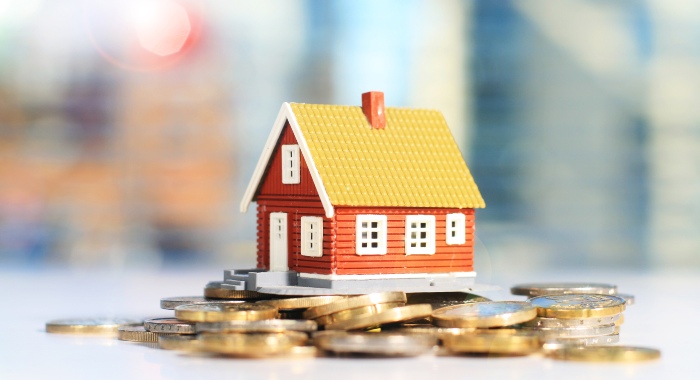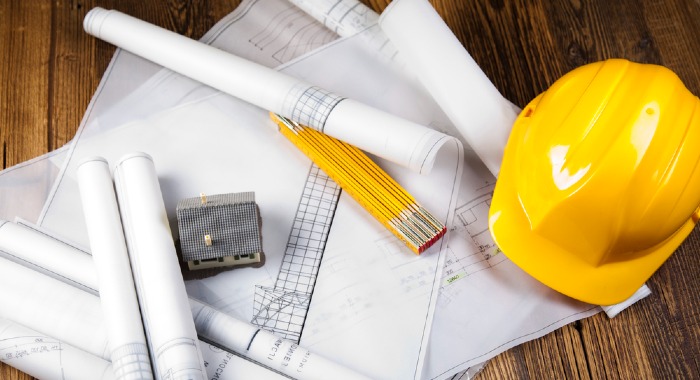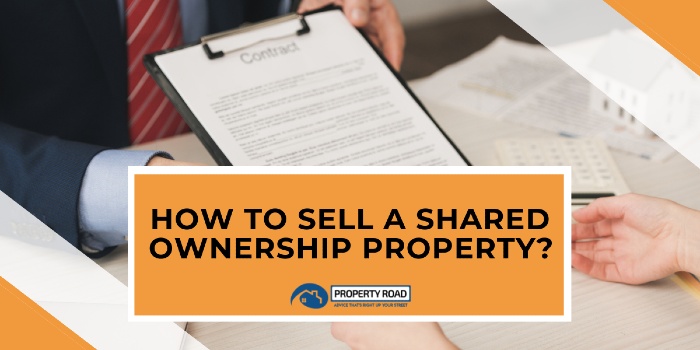It’s a popular way to get on the housing ladder in the UK, but when you want to move, you’ll need to know how to sell a shared ownership property.
While selling a shared ownership home is more complicated than it is for other properties, it’s not impossible. Nonetheless, you will need to take a few more steps before proceeding.
Not only will you need to check your lease and contact your housing association since you will be sharing ownership of your home with them, but you will also need to have your home independently valued.
Here, the Property Road team looks at what needs to be done under a shared ownership scheme when selling – and what happens when you own 100% of the property.
This, and more crucial information, will help anyone who’s wanting to sell a shared ownership home successfully.
What is a shared ownership property?
The first thing to appreciate is: what is a shared ownership property? It is:
- A government scheme that helps first-time buyers become owners of a property;
- To be eligible, you need to earn less than £80,000 per household – in London, it is £90,000 a year;
- You only buy between 25% and 75% of the property and rent the rest from a local authority or housing association.
For many people, the scheme means they can get a mortgage for their share of the property’s value more easily than they could for a property at full price.
The scheme also offers the chance of buying more shares in their home until 100% of ownership is achieved – this is called ‘staircasing’.
There’s a very useful page on the government’s website that explains the advantages of shared ownership really well.
Selling A Property? FREE Step-By-Step Platform
What are the benefits of a shared ownership property?
The most obvious benefit of a shared ownership home is that someone who can’t afford to buy at full price can buy a share of a property instead and rent the council’s or housing association’s share.
This is a great way for someone to get onto the property ladder if they can’t afford to buy in their area outright. The scheme also offers long-term stability without overstretching the family budget.
Deposits tend to be lower than necessary on the open market because you aren’t buying a 100% share of a property, and some mortgage lenders have lower rates, even if the borrower is on a low wage.
This means that the repayments are cheaper – and the rent share also tends to be lower than paying private rent.
What are the downsides of a shared ownership property?
While there are lots of benefits to a shared ownership home, there are some downsides too. They include:
- Not every mortgage lender will offer a shared ownership mortgage;
- The owner-occupier will have to pay 100% of any service charge and ground rent for the property – regardless of what your share is;
- You need to pay stamp duty when your share is equal to, or more than 80% of the property’s value.
Also, shared ownership properties tend to be leasehold which is a form of long tenancy that gives you the right to occupy and use your home for a set period. This lease is determined in the very beginning and could be for 99 or 125 years.
Some home ownership schemes also have restrictions on the improvements you can carry out, so before making any structural alterations, you will need to get permission from the housing provider.
How to sell a shared ownership property?

Once you buy a shared ownership home, you need to understand:
- You can sell your shared ownership home whenever you want;
- If you own all of the property – that is 100% of the shared ownership – you can sell the property like any normal house through an estate agent;
- If you don’t own 100%, the council or housing association, whichever owns a share in the property, may attempt to find a buyer – these buyers tend to be other first-time buyers keen to have a shared ownership home.
This last point is important because you must tell whoever owns the rest of the property that you want to sell.
Sometimes, there will be a time restriction for the housing association to find you a buyer, which can be a few weeks.
If they can’t find a buyer, then you can then sell the property with an estate agent.
How hard is it to sell a shared ownership property?
In some ways, it can be easier to sell a shared ownership home than trying to sell a property you wholly own.
That’s because the council or housing association will have photographers and surveyors that you can use, and they will have the vital information available for a buyer – this includes the leasehold information form.
However, there are some extra steps that you need to be aware of when it comes to selling a shared ownership home, they include:
- The property must be valued by a RICS chartered surveyor before being put up for sale;
- You’ll not only need to pay your own legal fees when selling, but also the housing association’s;
- Pay for the Leasehold Information Form, which will cost between £200 – £300 – remember, all shared ownership properties are leasehold.
It’s worth noting that this form is also known as the ‘Management Pack’ for some housing associations and may contain up to three years of audited accounts.
There will also be information about service charges, building insurance documents as well as fire safety reports.
Once the forms have been sent to your solicitor, they will be forwarded to the buyer’s solicitor for review, and they may have questions for you to answer.
Don’t forget that you’ll also need to fill in the TA6, which is the property information form. This contains a lot of information about your home for potential buyers to help them decide whether they want to proceed with the purchase. It will include:
- Your property boundaries;
- Information about property disputes;
- Details of any building works carried out;
- Information about whether the property is listed or in a conservation area;
- Utility supply to the property such as electricity, water and gas.
This information form is also where warranties and guarantees for things like any electrical work, roofing, damp proofing, windows and central heating will be kept.
The sales process will also include a fixture and fittings form known as the TA10.
This will detail what is excluded and included with the property sale price, such as the radiators and boiler, carpets, cupboards and curtains.
This is also a legally binding document that is part of the contract of sale – so if you say that something will be included in the sale, then you must include it. Not doing so leaves you liable to legal action.
The steps needed to sell a shared ownership property

Here, we spell out the steps you need to take when selling your shared ownership home:
Check your lease carefully
The first step is to check your lease because each local authority or housing association will have its own process when it comes to selling a shared ownership home.
The lease you signed will detail the procedure that you need to follow, and it will have information on how to value your home and who will pay for what when it comes to selling.
The lease will also detail any restrictions that are in place when you sell.
Contact the housing provider
The next step is to contact the local authority or housing association. They will:
- Try to find a buyer – usually within eight weeks;
- Hand you the marketing fees for them to do this – expect a bill of between £300 and £400 to include the cost of advertising, floorplans and photographs;
- The housing association will need to arrange a time that’s convenient for viewings;
- If a buyer is found, they will need to meet the mortgage requirements for buying property.
If a buyer cannot be found, then you can sell using an estate agent – be aware that they will need to find a buyer willing to buy a shared ownership home because you don’t own 100% of the property.
Fill in the relevant forms
Along with contacting the housing association, you need to complete the relevant forms, such as:
- The intention to sell form;
- Read and sign off the selling guide so the housing association will get confirmation that you understand the house-selling process;
- The housing association will need a fee (£300-£400) to market the property;
- You will also need to choose a photographer but if the housing association still has a share then they will have a list of photographers you can use;
- You will also need to get a valid energy performance certificate – you can’t sell your home without one.
Get an independent valuation
You must have a market value for your property, and you need to use an independent RICS surveyor. This will cost between £250 and £500.
The housing association or council will have a list of surveyors available.
You will also need a conveyancing solicitor to help with the sale. You’ll need to:
- Pay your legal fees and the housing association’s legal fees which could be around £500 – check your lease to see what is detailed
- Get several quotes from solicitors before hiring one so you know what they will be charging
- Try to find a solicitor with experience in selling shared ownership homes.
It might be a good idea to use the solicitor you used when buying the property because they’ll not only know about selling it but will understand the process.
How does a buyer make an offer on a shared ownership home?
Once you have some viewings from interested parties, they will be sent a reservation form and then join the selection and allocation process of the housing association.
When the successful applicant has been chosen and sent an offer letter, they will have to pay a non-refundable reservation fee.
This fee brings some security as the seller because then you’ll know they are serious about buying your home.
The buyer will need to meet with a mortgage adviser to source a mortgage so they can afford to buy their share of the property
The memorandum of sale will be issued to everyone involved in the process of sale can proceed and the solicitor will start working to assign the lease of the property.
Selling a shared ownership home
Essentially, selling a shared ownership home is a straightforward process and comes down to this:
- If you own 100% of the property, it is no longer shared ownership, and you can safely proceed with selling using an estate agent;
- If you own less than 100% of the property, you will need to tell the council or housing association that you want to sell and the established process they have for this will begin.
You might be lucky and find a buyer willing to buy into a shared ownership home very quickly, and if not, then you will be able to source a buyer on the open market. Whichever it is, owning part of a shared ownership is not a restriction on selling your share when you want to move.





